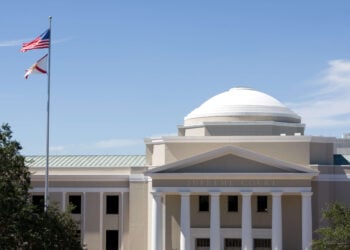After class action claims are resolved, sometimes there are remaining funds because some class members can’t be found, died, moved, etc. The class members who did receive their full share are not entitled to a windfall in the form of an additional distribution. Similarly, the defendant is not entitled to keep money it agreed to forfeit in a settlement or was ordered to surrender by the court as part of a judgment. While courts have several options in distributing those funds, the most common approach is for the court to order a cy pres distribution to charitable organizations. Cy pres means as nearly as possible and the practice of distributing to charities in the area where the class members are located is to indirectly benefit the class members who did not receive their payment.
“The class benefits from a cy pres distribution as it realizes the gains that its charitable contributions can accomplish.” William B. Rubenstein, 4 Newberg on Class Actions § 12:32 (5th ed.).
Some courts have taken the view that cy pres distributions should be only to organizations that reflect the nature of the claim (subject identity). So, for example, if the claim involved internet privacy, the cy pres distribution must be made to an organization that studies internet privacy issues. Such an approach to cy pres distributions is neither required nor effective. Cy pres distributions instead focus on geographic identity: being made in a way so the benefits of the charitable contributions are reaped by the class members or their families in the community harmed by the defendant’s conduct.
No requirement exists that cy pres distributions be made to an organization that addresses issues relating to the nature of the claim. The Second Circuit held that it was “aware of no authority … that compels a court to make a cy pres allocation to organizations combating harms similar to those that injured the class members[.]” (Emphasis sic.) In re Holocaust Victim Assets Litig., 424 F.3d 158, 166 (2d Cir.2005). And, in fact, courts are not limited to making cy pres contributions only to organizations with a nexus to the underlying cause of action. Instead, the “doctrine of cy pres and courts’ broad equitable powers now permit use of funds for other public interest purposes by educational, charitable, and other public service organizations[.]” Superior Beverage Co., Inc. v. Owens-Illinois, Inc., 827 F. Supp. 477, 479 (N.D. Ill. 1993).
This of course is because cy pres is not to advance the underlying lawsuit, but to indirectly benefit those class members who did not get their payment.
In In re Motorsports Merchandise Antitrust Litigation, 160 F. Supp.2d 1392 (N.D. Ga. 2001), the complaint alleged price fixing by vendors of merchandise sold at professional stock car races. In identifying charities to receive cy pres distributions, the court “attempted to identify charitable organizations that may at least indirectly benefit the members of the class of NASCAR racing fans,” by looking for groups in the same community where the unpaid class members were located. Id. at 1395. The district court selected 10 charities to receive a cy pres distribution, including The Make-a-Wish Foundation, The American Red Cross, Children’s Healthcare of Atlanta, Duke Children’s Hospital and Health Center, and Susan G. Komen Breast Cancer Foundation. Id. at 1396-98.
The main requirement in making a cy pres distribution is geographic location. For example, in Rosser v. A & S Constracting, Inc., No. 2:15-cv-00711, 2017 WL 666121, at *2 (S.D. Ohio Feb. 17, 2017), the court ordered a cy pres distribution to Southeastern Ohio Legal Services, after noting that the plaintiffs all resided in the southeastern region of Ohio and that “geographic scope should be a consideration in the selection of a cy pres recipient.” Id.
The other main requirement, perhaps the most critical, is purpose of the class action itself – not simply to compensate the victims, but to disgorge from a wrongdoer all monies obtained by the wrongful practice. Deterrence. “The fundamental purpose of disgorgement is not to compensate securities fraud victims but to deny the violator his ill-gotten gains.” SEC v. Lange, No. 97-6018, 2002 WL 475130, at *1 (E.D. Penn. Mar. 28, 2002).
So when you think of class actions, don’t think of returning one $4 overcharge to a single customer. Think of the $4 million collected by the defendant in cheating one million customers. Think disgorgement, which is not punishment, or even damages, since ordering someone to return money they obtained improperly is not to harm or punish, but only to return the business and the customer to status quo. To deter future wrongdoing. When that money is to be disgorged by a business in a settlement but some class members cannot be found, cy pres insures the money is still disgorged, to the same geographic community where the class members are located to indirectly benefit them and their family. Patrick J. Perotti










